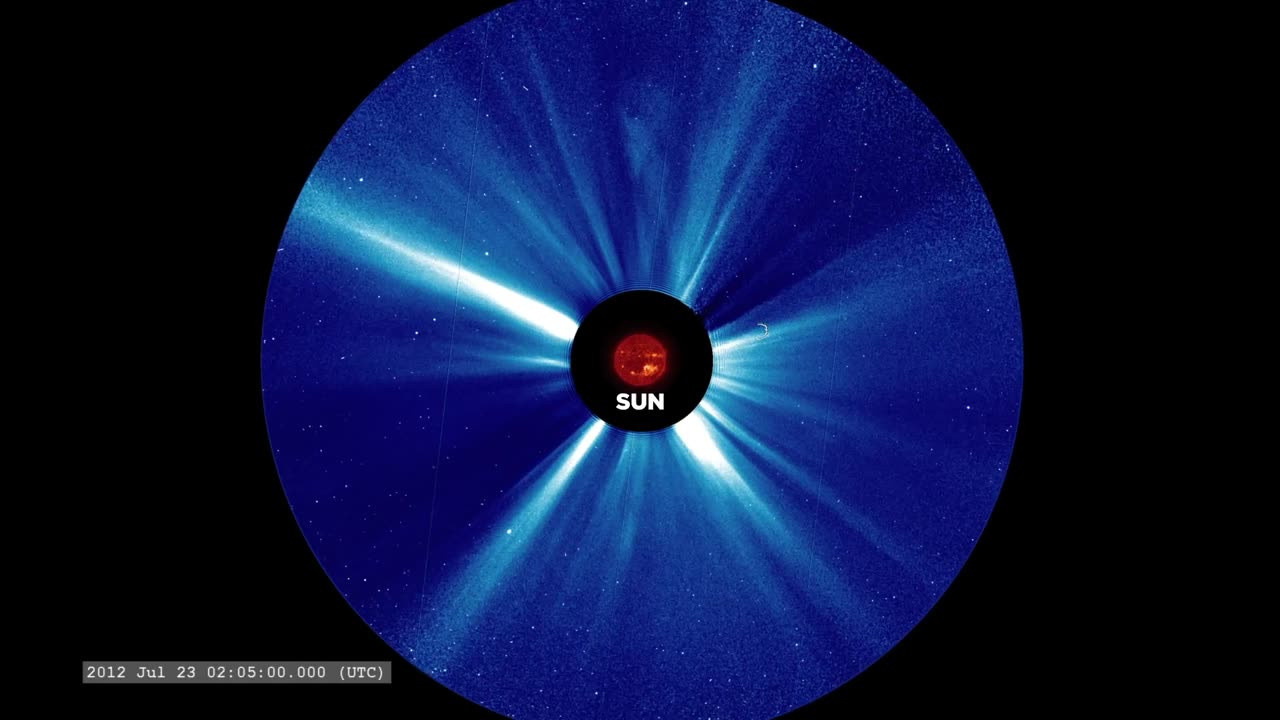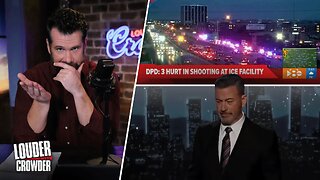Premium Only Content

How NASA Will Protect Astronauts From Space Radiation
How NASA Will Protect Astronauts From Space Radiation How NASA Will Protect Astronauts From Space Radiation How NASA Will Protect Astronauts From Space Radiation How NASA Will Protect Astronauts From Space Radiation How NASA Will Protect Astronauts From Space Radiation How NASA Will Protect Astronauts From Space Radiation How NASA Will Protect Astronauts From Space Radiation How NASA Will Protect Astronauts From Space Radiation How NASA Will Protect Astronauts From Space Radiation How NASA Will Protect Astronauts From Space Radiation How NASA Will Protect Astronauts From Space Radiation How NASA Will Protect Astronauts From Space Radiation How NASA Will Protect Astronauts From Space Radiation How NASA Will Protect Astronauts From Space Radiation How NASA Will Protect Astronauts From Space Radiation How NASA Will Protect Astronauts From Space Radiation How NASA Will Protect Astronauts From Space Radiation How NASA Will Protect Astronauts From Space Radiation How NASA Will Protect Astronauts From Space Radiation How NASA Will Protect Astronauts From Space Radiation How NASA Will Protect Astronauts From Space Radiation How NASA Will Protect Astronauts From Space Radiation How NASA Will Protect Astronauts From Space Radiation How NASA Will Protect Astronauts From Space Radiation How NASA Will Protect Astronauts From Space Radiation How NASA Will Protect Astronauts From Space Radiation August 1972, as NASA scientist Ian Richardson remembers it, was hot. In Surrey, England, where he grew up, the fields were brown and dry, and people tried to stay out of the Sun, indoors and televisions on. But for several days that month, his TV picture kept breaking up. “Do not adjust your set,” he recalls the BBC announcing. “Heat isn’t causing the interference. It’s sunspots.” The same sunspots that disrupted the television signals led to enormous solar flares — powerful bursts of radiation from the Sun — Aug. 4-7 that year. Between the Apollo 16 and 17 missions, the solar eruptions were a near miss for lunar explorers. Had they been in orbit or on the Moon’s surface, they would have sustained dangerous levels of solar radiation sparked by the eruptions. Today, the Apollo-era flares serve as a reminder of the threat of radiation exposure for technology and astronauts in space. Understanding and predicting solar eruptions is crucial for safe space exploration. Almost 50 years since those 1972 storms, the data, technology and resources available to NASA have improved, enabling advancements towards space weather forecasts and astronaut protection — key to NASA’s Artemis program to return astronauts to the Moon. Music credits: “Boreal Moment” by Benoit Scarwell [SACEM]; “Sensory Questioning”, “Natural Time Cycles”, “Emerging Designer”, and “Experimental Design” by Laurent Dury [SACEM]; “Superluminal” by Lee Groves [PRS], Peter George Marett [PRS] from Killer Tracks Read more: https://www.nasa.gov/feature/goddard/2019/how-nasa-protects-astronauts-from-space-radiation-at-moon-mars-solar-cosmic-rays This video is public domain and along with other supporting visualizations can be downloaded from the Scientific Visualization Studio at: http://svs.gsfc.nasa.gov/13275 If you liked this video, subscribe to the NASA Goddard YouTube channel: http://www.youtube.com/NASAExplorer Follow NASA’s Goddard Space Flight Center · Instagram http://www.instagram.com/nasagoddard · Twitter http://twitter.com/NASAGoddard · Twitter http://twitter.com/NASAGoddardPix · Facebook: http://www.facebook.com/NASA.GSFC · Flickr http://www.flickr.com/photos/gsfc
August 1972, as NASA scientist Ian Richardson remembers it, was hot. In Surrey, England, where he grew up, the fields were brown and dry, and people tried to stay out of the Sun, indoors and televisions on. But for several days that month, his TV picture kept breaking up. “Do not adjust your set,” he recalls the BBC announcing. “Heat isn’t causing the interference. It’s sunspots.” The same sunspots that disrupted the television signals led to enormous solar flares — powerful bursts of radiation from the Sun — Aug. 4-7 that year. Between the Apollo 16 and 17 missions, the solar eruptions were a near miss for lunar explorers. Had they been in orbit or on the Moon’s surface, they would have sustained dangerous levels of solar radiation sparked by the eruptions. Today, the Apollo-era flares serve as a reminder of the threat of radiation exposure for technology and astronauts in space. Understanding and predicting solar eruptions is crucial for safe space exploration. Almost 50 years since those 1972 storms, the data, technology and resources available to NASA have improved, enabling advancements towards space weather forecasts and astronaut protection — key to NASA’s Artemis program to return astronauts to the Moon. Music credits: “Boreal Moment” by Benoit Scarwell [SACEM]; “Sensory Questioning”, “Natural Time Cycles”, “Emerging Designer”, and “Experimental Design” by Laurent Dury [SACEM]; “Superluminal” by Lee Groves [PRS], Peter George Marett [PRS] from Killer Tracks Read more: https://www.nasa.gov/feature/goddard/2019/how-nasa-protects-astronauts-from-space-radiation-at-moon-mars-solar-cosmic-rays This video is public domain and along with other supporting visualizations can be downloaded from the Scientific Visualization Studio at: http://svs.gsfc.nasa.gov/13275 If you liked this video, subscribe to the NASA Goddard YouTube channel: http://www.youtube.com/NASAExplorer Follow NASA’s Goddard Space Flight Center · Instagram http://www.instagram.com/nasagoddard · Twitter http://twitter.com/NASAGoddard · Twitter http://twitter.com/NASAGoddardPix · Facebook: http://www.facebook.com/NASA.GSFC · Flickr http://www.flickr.com/photos/gsfc
August 1972, as NASA scientist Ian Richardson remembers it, was hot. In Surrey, England, where he grew up, the fields were brown and dry, and people tried to stay out of the Sun, indoors and televisions on. But for several days that month, his TV picture kept breaking up. “Do not adjust your set,” he recalls the BBC announcing. “Heat isn’t causing the interference. It’s sunspots.” The same sunspots that disrupted the television signals led to enormous solar flares — powerful bursts of radiation from the Sun — Aug. 4-7 that year. Between the Apollo 16 and 17 missions, the solar eruptions were a near miss for lunar explorers. Had they been in orbit or on the Moon’s surface, they would have sustained dangerous levels of solar radiation sparked by the eruptions. Today, the Apollo-era flares serve as a reminder of the threat of radiation exposure for technology and astronauts in space. Understanding and predicting solar eruptions is crucial for safe space exploration. Almost 50 years since those 1972 storms, the data, technology and resources available to NASA have improved, enabling advancements towards space weather forecasts and astronaut protection — key to NASA’s Artemis program to return astronauts to the Moon. Music credits: “Boreal Moment” by Benoit Scarwell [SACEM]; “Sensory Questioning”, “Natural Time Cycles”, “Emerging Designer”, and “Experimental Design” by Laurent Dury [SACEM]; “Superluminal” by Lee Groves [PRS], Peter George Marett [PRS] from Killer Tracks Read more: https://www.nasa.gov/feature/goddard/2019/how-nasa-protects-astronauts-from-space-radiation-at-moon-mars-solar-cosmic-rays This video is public domain and along with other supporting visualizations can be downloaded from the Scientific Visualization Studio at: http://svs.gsfc.nasa.gov/13275 If you liked this video, subscribe to the NASA Goddard YouTube channel: http://www.youtube.com/NASAExplorer Follow NASA’s Goddard Space Flight Center · Instagram http://www.instagram.com/nasagoddard · Twitter http://twitter.com/NASAGoddard · Twitter http://twitter.com/NASAGoddardPix · Facebook: http://www.facebook.com/NASA.GSFC · Flickr http://www.flickr.com/photos/gsfc
August 1972, as NASA scientist Ian Richardson remembers it, was hot. In Surrey, England, where he grew up, the fields were brown and dry, and people tried to stay out of the Sun, indoors and televisions on. But for several days that month, his TV picture kept breaking up. “Do not adjust your set,” he recalls the BBC announcing. “Heat isn’t causing the interference. It’s sunspots.” The same sunspots that disrupted the television signals led to enormous solar flares — powerful bursts of radiation from the Sun — Aug. 4-7 that year. Between the Apollo 16 and 17 missions, the solar eruptions were a near miss for lunar explorers. Had they been in orbit or on the Moon’s surface, they would have sustained dangerous levels of solar radiation sparked by the eruptions. Today, the Apollo-era flares serve as a reminder of the threat of radiation exposure for technology and astronauts in space. Understanding and predicting solar eruptions is crucial for safe space exploration. Almost 50 years since those 1972 storms, the data, technology and resources available to NASA have improved, enabling advancements towards space weather forecasts and astronaut protection — key to NASA’s Artemis program to return astronauts to the Moon. Music credits: “Boreal Moment” by Benoit Scarwell [SACEM]; “Sensory Questioning”, “Natural Time Cycles”, “Emerging Designer”, and “Experimental Design” by Laurent Dury [SACEM]; “Superluminal” by Lee Groves [PRS], Peter George Marett [PRS] from Killer Tracks Read more: https://www.nasa.gov/feature/goddard/2019/how-nasa-protects-astronauts-from-space-radiation-at-moon-mars-solar-cosmic-rays This video is public domain and along with other supporting visualizations can be downloaded from the Scientific Visualization Studio at: http://svs.gsfc.nasa.gov/13275 If you liked this video, subscribe to the NASA Goddard YouTube channel: http://www.youtube.com/NASAExplorer Follow NASA’s Goddard Space Flight Center · Instagram http://www.instagram.com/nasagoddard · Twitter http://twitter.com/NASAGoddard · Twitter http://twitter.com/NASAGoddardPix · Facebook: http://www.facebook.com/NASA.GSFC · Flickr http://www.flickr.com/photos/gsfc
August 1972, as NASA scientist Ian Richardson remembers it, was hot. In Surrey, England, where he grew up, the fields were brown and dry, and people tried to stay out of the Sun, indoors and televisions on. But for several days that month, his TV picture kept breaking up. “Do not adjust your set,” he recalls the BBC announcing. “Heat isn’t causing the interference. It’s sunspots.” The same sunspots that disrupted the television signals led to enormous solar flares — powerful bursts of radiation from the Sun — Aug. 4-7 that year. Between the Apollo 16 and 17 missions, the solar eruptions were a near miss for lunar explorers. Had they been in orbit or on the Moon’s surface, they would have sustained dangerous levels of solar radiation sparked by the eruptions. Today, the Apollo-era flares serve as a reminder of the threat of radiation exposure for technology and astronauts in space. Understanding and predicting solar eruptions is crucial for safe space exploration. Almost 50 years since those 1972 storms, the data, technology and resources available to NASA have improved, enabling advancements towards space weather forecasts and astronaut protection — key to NASA’s Artemis program to return astronauts to the Moon. Music credits: “Boreal Moment” by Benoit Scarwell [SACEM]; “Sensory Questioning”, “Natural Time Cycles”, “Emerging Designer”, and “Experimental Design” by Laurent Dury [SACEM]; “Superluminal” by Lee Groves [PRS], Peter George Marett [PRS] from Killer Tracks Read more: https://www.nasa.gov/feature/goddard/2019/how-nasa-protects-astronauts-from-space-radiation-at-moon-mars-solar-cosmic-rays This video is public domain and along with other supporting visualizations can be downloaded from the Scientific Visualization Studio at: http://svs.gsfc.nasa.gov/13275 If you liked this video, subscribe to the NASA Goddard YouTube channel: http://www.youtube.com/NASAExplorer Follow NASA’s Goddard Space Flight Center · Instagram http://www.instagram.com/nasagoddard · Twitter http://twitter.com/NASAGoddard · Twitter http://twitter.com/NASAGoddardPix · Facebook: http://www.facebook.com/NASA.GSFC · Flickr http://www.flickr.com/photos/gsfc
-
 LIVE
LIVE
Dr Disrespect
3 hours ago🔴LIVE - DR DISRESPECT - WHAT THE HELL IS THIS GAME?
1,848 watching -
 LIVE
LIVE
LindellTV
34 minutes agoCharlie Kirk’s Legacy & Jimmy Kimmel Is BACK?! - The Mike Lindell Show
149 watching -
 1:11:38
1:11:38
Russell Brand
2 hours agoTrump Makes STUNNING 180 on Russia–Ukraine War & TORCHES the UN in EPIC Rant - SF639
159K77 -
 LIVE
LIVE
StoneMountain64
1 hour agoCoD NEXT Black Ops 7 prep getting my movement back
122 watching -
 1:07:29
1:07:29
Sean Unpaved
2 hours agoFootball Fire: Lions' Defense Halts Ravens, Giants Pivot to Dart, OU Grapples with Mateer's Surgery
26.7K -
 1:12:10
1:12:10
Timcast
2 hours ago🚨BREAKING: ANTI ICE Terror Attack In Dallas, 2 Dead, Several Injured | Tim Pool
208K181 -
 2:04:25
2:04:25
Steven Crowder
5 hours agoBreaking: ICE Facility Shot in Dallas - Another Left-Wing Attack?
388K367 -
 DVR
DVR
Mark Kaye
2 hours ago🔴 Jimmy Kimmel ROASTED For Fake Tears During Late Night Return
28.3K2 -
 1:07:28
1:07:28
Rebel News
2 hours agoLIVE | Fire at ostrich farm, RCMP & CFIA siege property, Rebels on the ground | Buffalo Roundtable
24.4K5 -
 1:02:08
1:02:08
The Rubin Report
4 hours agoCharlie Kirk’s Murder Has Officially Backfired
65.4K38